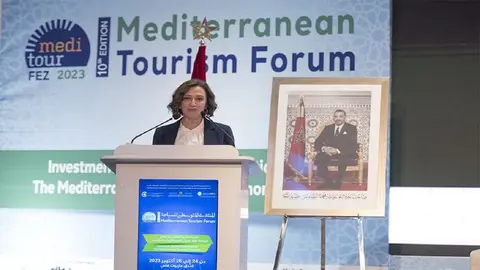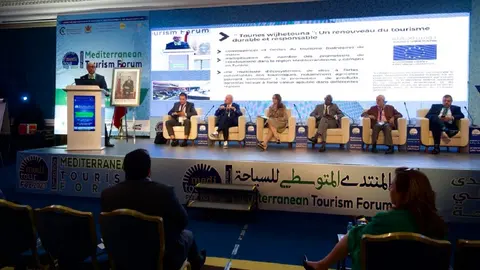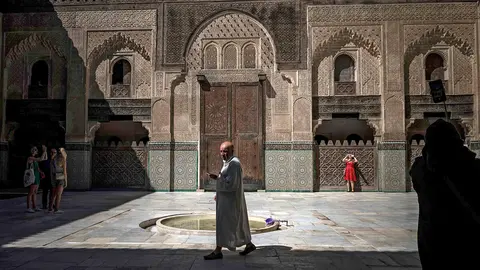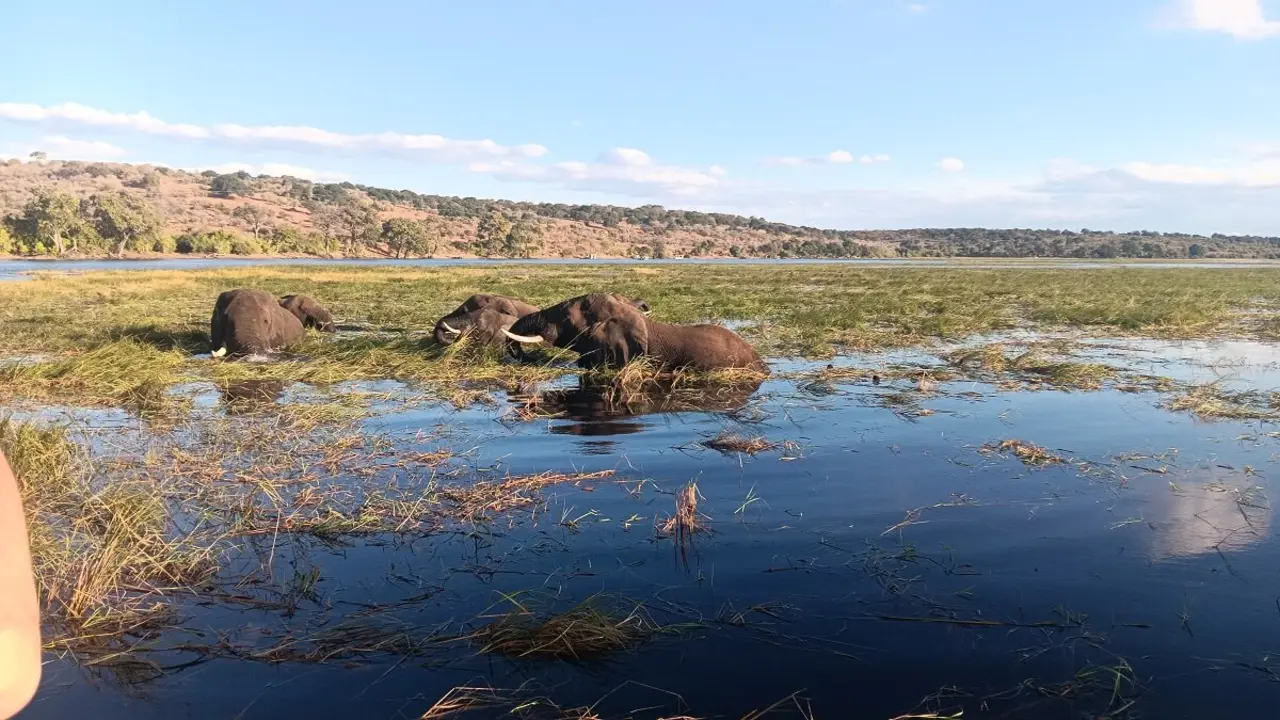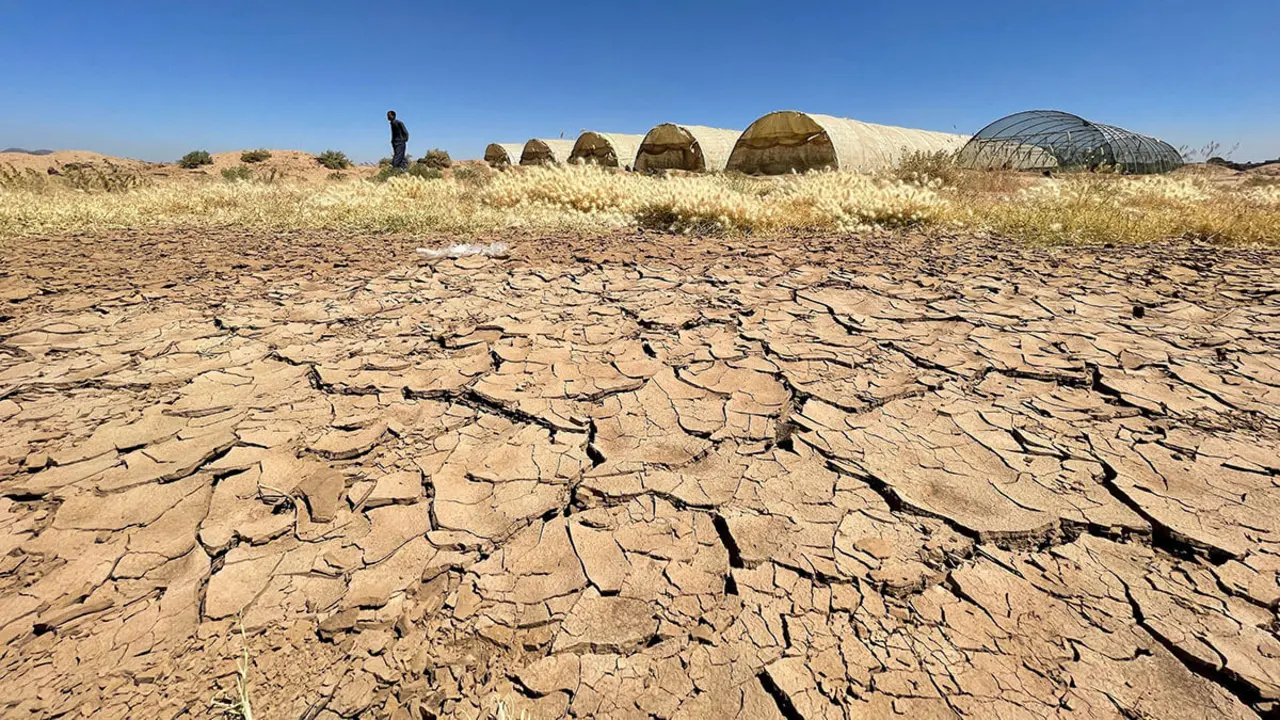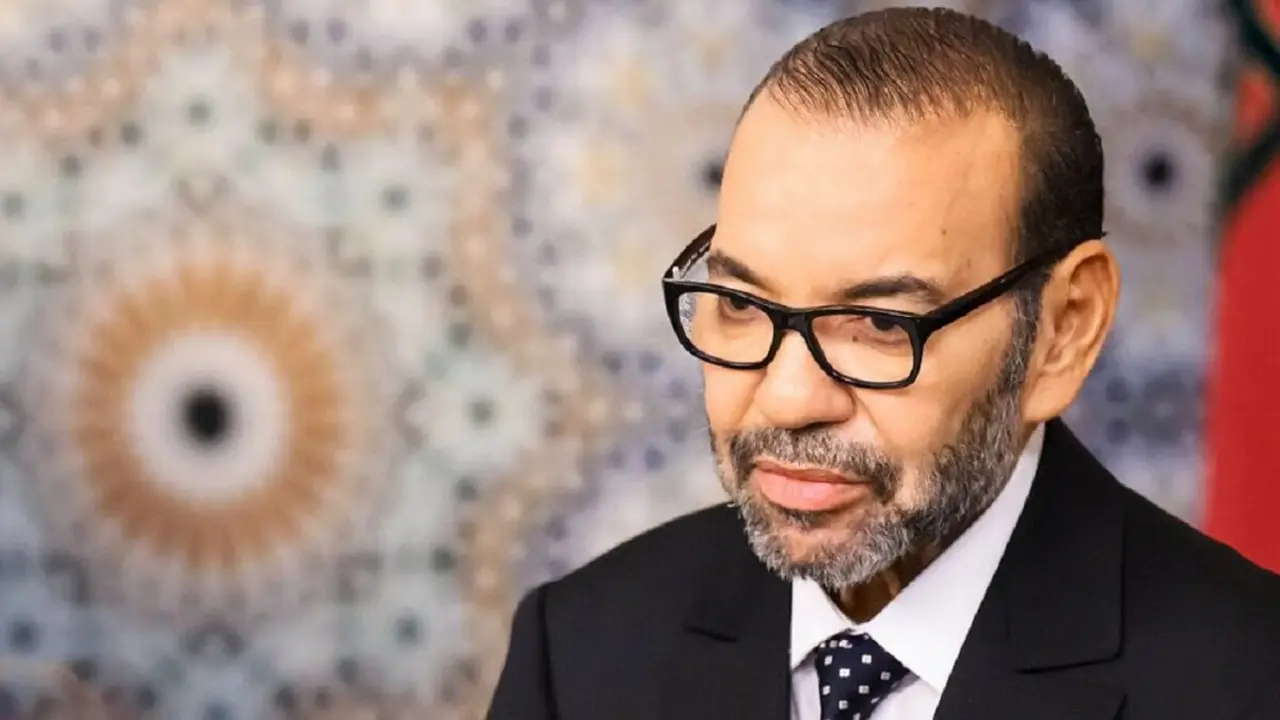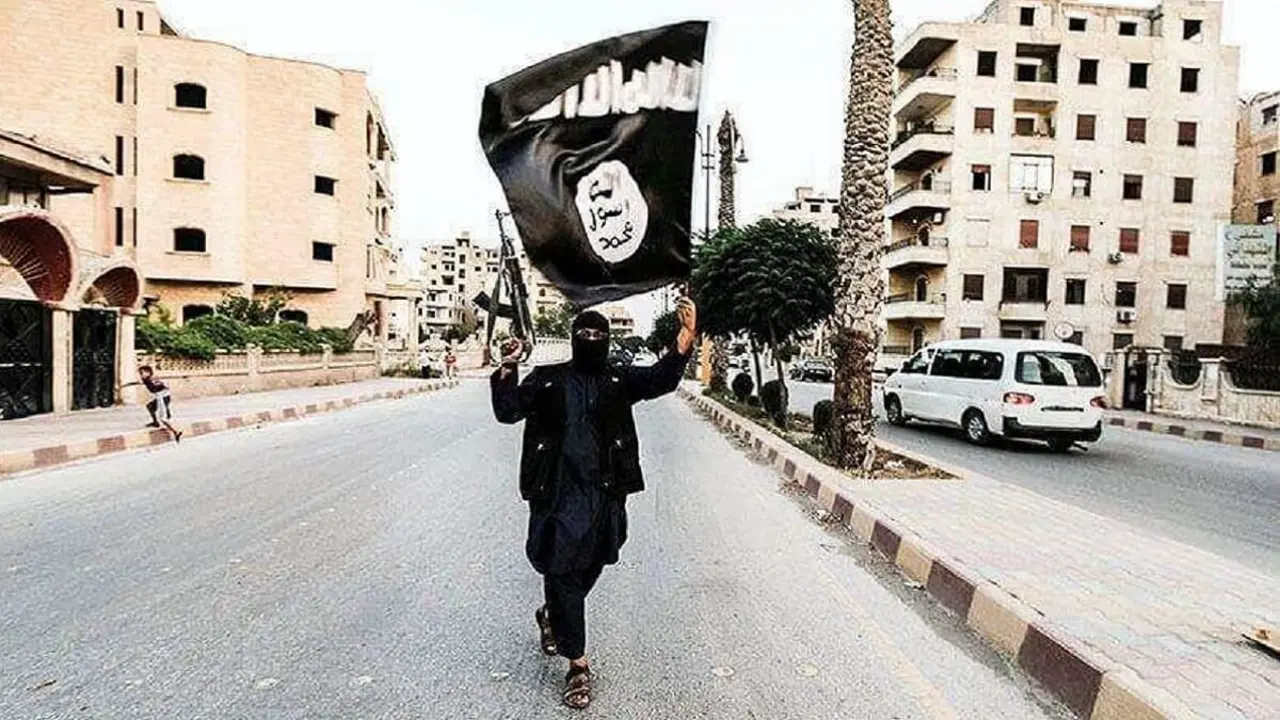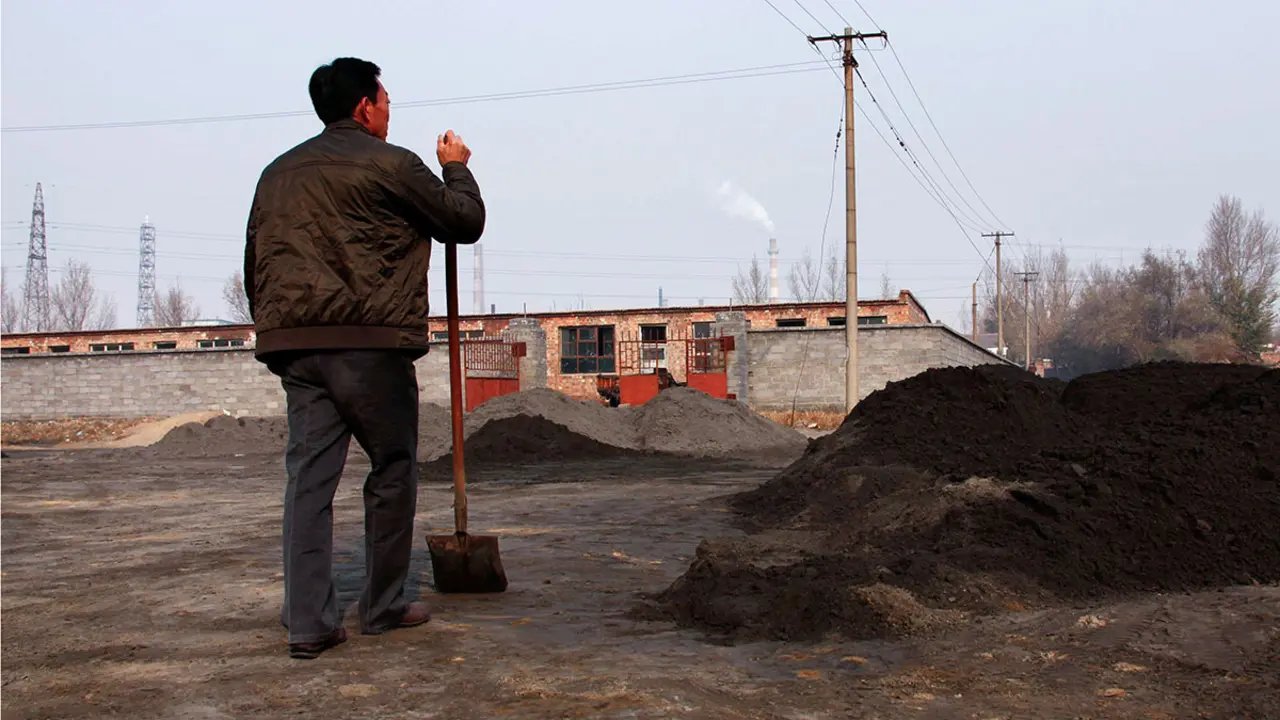Fez, Meknes and Volubilis: three historic sites where you can begin to discover the roots of Moroccan beauty

Fes, a place fragrant with spices and natural perfumes where you dare to take a random alley and let your instinct take over. There you can live at a relaxed pace an unparalleled experience among its souks, its medersas and its history whose impact can be seen in the ancient walls and the craftsmanship in its different types and colours.
Meknes attracts you by being both the city of olives and of the best wine in the country. Through the Al Mansour Gate, you can look back on a flourishing past in which the city was an authentic Ismaili capital. Its Medina takes you deep into the depths of civilisation and history, while its gastronomy makes you enjoy the best local produce to whet your appetite.
Volubilis, the purely Roman destination, is a city founded in Morocco in the 3rd century BC. In its historical space you find yourself isolated from the noise of the city, immersed in antiquity among the ruins of Walili where you discover corner by corner the impressive creativity of the inhabitants of the place at that time. Among its giant stones you enjoy the clean air, the natural green panorama of the surrounding landscapes and listen to yourself in a relaxing silence mixed with the pure sounds of nature that dance in harmony with the echo of the site.

Fez
Entering the city of Fez, you encounter two worlds close in space and distant in time: Fez el Bali and Fez Ydid. Once you are in the spiritual capital of Morocco, your adventure begins in the Medina of Fez el-Bali: a real labyrinth, with narrow streets designed in a chaotic and mysterious way. Fez el-Bali represents the oldest part of the city, dating back to the 8th century. This historic interval is made up of more than 300 neighbourhoods and 9,000 alleys, and the curious thing is that many of them are dead ends.
The main access to the Fez El-Bali Medina is through the Bab Bou Yeloud Gate or "the Blue Gate". It was built in 1913 and represents the starting point to the oldest and most charming part of the city. The Bab Bou Yeloud Gate is a beautiful historical monument consisting of three symmetrical horseshoe arches decorated with bluish-coloured tiles.
On your tour of Fez el Bali, don't miss the opportunity to visit the traditional tannery in the tanners' souk, where you can explore the ancient process of making and colouring leather in large vats filled with natural dyes of different colours.

Without looking too hard, because there are several, head straight for the Chouwara tannery, which is the largest of all the traditional tanneries still in operation in the city. There, with a few bunches of mint given to you by any of the craftsmen to soften the nauseating smell of the place, you can enjoy a very particular spectacle of art and colour.
From the heart of the Fez El-Bali Medina you can look out over one of the terraces of shops surrounding the tannery to see the marvellous artisan landscape and at the same time witness the hard work of the craftsmen.
Once you leave the tanners' and dyers' souk, you find yourself in the Place Seffarine. It is a small square which still preserves one of the oldest trades in Fez, that of the coppersmiths who have been working with red copper since ancient times to give a special shape to decorative and kitchen articles such as teapots, trays, pots and other objects. What is special about this position in Fez El Bali is the sound of the clanking of metal that reigns on the site and makes you step away from the reality of the 21st century to dive into time immemorial.
During your visit to the Medina of Fez El Bali, you cannot miss one of the most famous traditional souks of the city. The Henna Souk is a market of traditional cosmetic and pharmaceutical products. And as the name suggests, the souk's star product is henna, used by Moroccan women as a kind of tattoo for their hands and feet and a natural hair dye.

Another traditional craft that is still alive today is carpentry. The main centre is the Zoco Neyyarine (carpenters) where craftsmen take great pains to refine their work, which is then displayed in the Museum of Wood Art and Crafts, which is full of traditional objects made of wood and hand-carved by Fez's master craftsmen.
The Sekkatine Souk takes you into the world of handmade and decorated horse and mule tack, with its gilded designs and different shapes.
Another souk that attracts the attention of curious tourists is Chemainne, where, in ancient times, all types of candles were produced and sold, whereas today it is more focused on the sale of dried fruits and nuts.
One of the great graces of the souks is to be found in the Attarine Souk where you will notice the wonderful variety of spices displayed in its multi-coloured shops.
As you bid farewell to these traditional souks, you stop unnoticed at the large markets on Talaa Kebira and Talaa Seghira streets to get a closer look at the diversity of handicrafts on offer in the shops and bazaars selling all kinds of traditional Fasi merchandise.
On the other side of the city is the Fez el-Ydid Medina which was founded by the Merinids at the end of the 13th century under the name "The White City". It did not take long for the New Medina of Fez, Fez el-Ydid, to become the enclave of royal power. The new area is distinguished by the Royal Palace, a jewel of traditional architecture hidden behind large copper gates that welcome you from the outside. The Royal Palace of Fez is considered to be the largest in Morocco with an area of more than 80 hectares.

Moving a little further into the Medina Fez el-Ydid, you come to the Jewish Quarter known locally as the "Mellah", where its architecture and markets trace the borders of the area. Located in the centre of the Fès el-Ydid Medina, the "Mellah" is the place where the Jewish community used to monopolise the trade of precious metals such as gold and silver. This was once a very productive economic activity as it was the best way for the Fasi population to save money.
Fez enjoys an internationally recognised scientific and spiritual dimension as the city that is home to the oldest university in the world which is still in operation, as well as its medersas (Koranic schools) which are sources of religiousness and know-how accredited since the dawn of the Medina's history.
Built in 859 by Fatima Al Fihriya, the Al Qarawiyyin University, housed in the Al Karaouine Mosque, is one of the marvellous architectural complexes of Fez. The university had a library with a very rich content, which in 1613 exceeded 320,000 works and manuscripts. At that time, streams of students and scholars flocked to Fez to pursue their studies and research in various branches of knowledge in a city that has become the capital of science and knowledge in the Maghreb. Today, the Al Karaouine library still houses more than 30,000 works, as well as rare specimens and manuscripts that are unique in the world.
One of the most important centres of Islamic learning in the vicinity of the Al Karaouine Mosque in Fez is the Attarine School which was built between 1323 and 1325. It was one of the main schools of the religion where students could reside during their studies. The Medersa Attarine is the most beautiful of all the schools in Fez.
Another famous school in Fez is the Medersa Bou Inania which was inaugurated in 1350. It is a Qur'anic Medersa for higher studies and a residence for its students, distinguished by its precisely hand-carved walls of stucco and wood, covered on the lower part by small tiles with a myriad of geometric figures.
Exploring the spiritual side of Fez, the Mulay Idris Mausoleum gives you an insight into the city's most important religious focus and is one of Morocco's most famous pilgrimage sites.

Meknes
Of Morocco's Imperial Cities, Meknes is quieter and more relaxed than Fez. In the 17th century, Mulay Isma'il chose Meknes as the capital of Morocco, surrounding it with beautiful walls and magnificent gates. One of the main gates is the Bab Al-Mansour Gate which connects the square in front of the Mulay Isma'il Palace with the ancient city of Mulay Isma'il.
In Meknes there are several must-see places to visit such as the souks where you can take a simple stroll and see the modern touch that sets it apart from Fez.
When you arrive at El-Hedim Square in Meknes, the atmosphere is reminiscent of Jamaa El Fna Square in Marrakech, as well as being the centre of the city's public and cultural life. The area, once the site of public executions and royal announcements, is now a meeting and entertainment point with restaurants, terraces and shops of various kinds.

One of the most interesting museums in Morocco is located in Meknes and is called the Dar Jamaï Museum. It is a beautiful traditional building that encompasses all types of music, folklore and jewellery from all over the country.
The Mausoleum of Mulay Ismaïl is one of the key destinations in the Medina of Meknes along with the Bou Inania Madrasa which resembles the interior of the medersas of Fez.
Famous by the name of Heri Souani is the huge historical monument that was used to store food and contain the royal stables of Mulay Isma'il, with a capacity of 12,000 horses.
Near the stables and granaries of Moulay Isma'il, there is another important monument of Meknes which is Sahriy Swani or Basin of the Waterwheels. This large basin dates back to the 17th century and used to supply water to the whole city especially in case of drought; it also offers a superb walking retreat for tourists.

Volubilis
Located 33 km north of Meknes, Walili (Volubilis) was declared a UNESCO World Heritage Site in 1997. Covering an area of 40 hectares, it contains the best-preserved and most visited archaeological remains in Morocco.
Volubilis is an ancient Roman city that joined the Roman Empire in 42 A.D. At the end of the 8th century, Idris I made Volubilis his refuge after escaping from the Abbasids.
On the walk to discover the monuments of Walili, there are some not-to-be-missed sights such as the Arch of Caracalla, built in marble in 217 in honour of the emperor and his mother.
The most famous of Volubilis are the mosaics present on various surfaces of the city. The Trials of Hercules, the Bath of the Nymphs, the Acrobats, Bacchus and Ariadne and the Bath of Diana are just some of the places to stop and admire.
From the upper part of Volubilis you can see the three places that represented the centre of the city's public life: Forum, Basilica and Temple of Jupiter. As for the Baths, despite their somewhat neglected state, they are proof of the existence of a heating system used by the Romans.
Venturing into the narrow streets of Fez, enjoying the curious secrets of Meknes or losing oneself in the threads of the Roman history of Walili is an amusing desire that any tourist in the world can experience by making the most of the wonder of the three incomparable destinations: Fez, Meknes and Volubilis.

